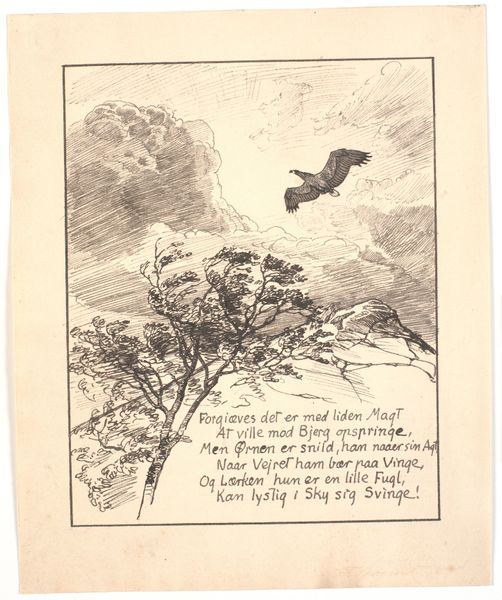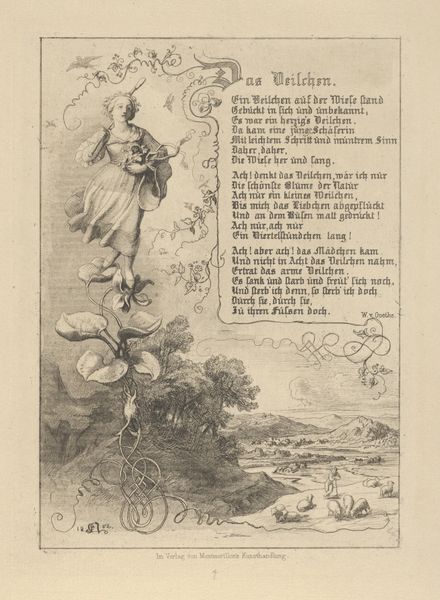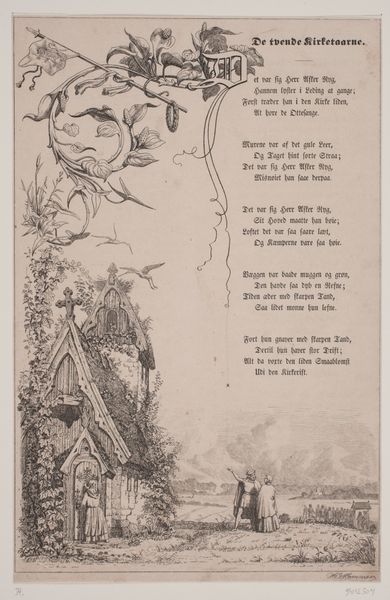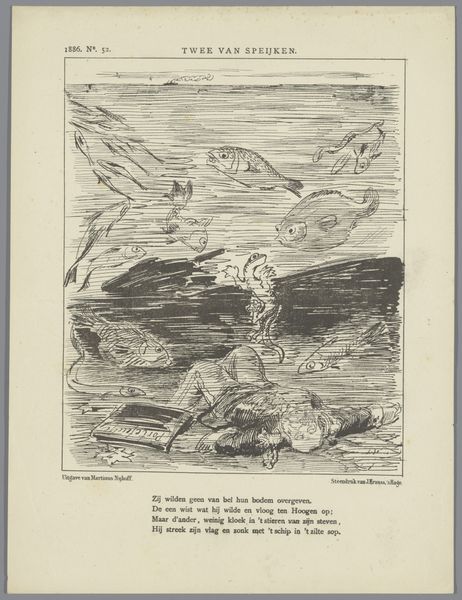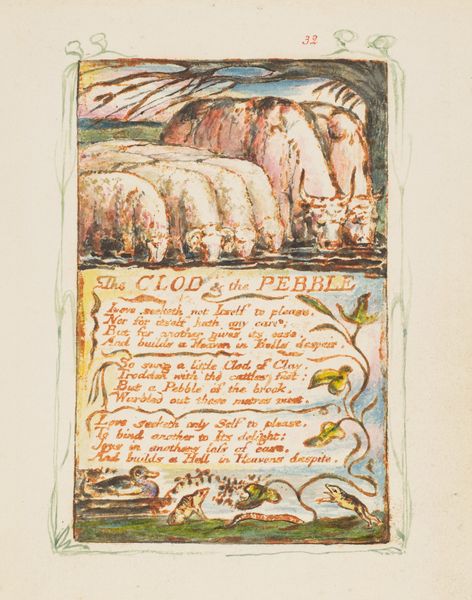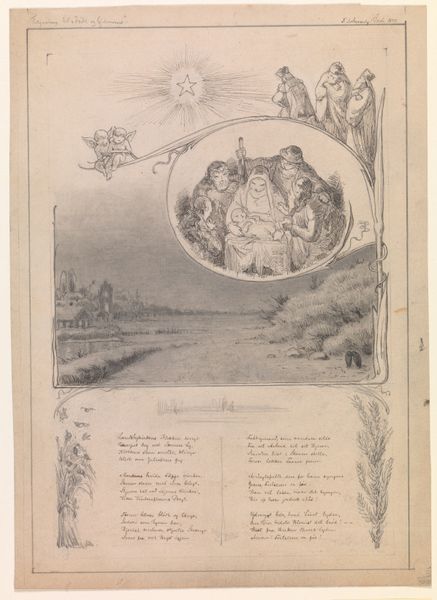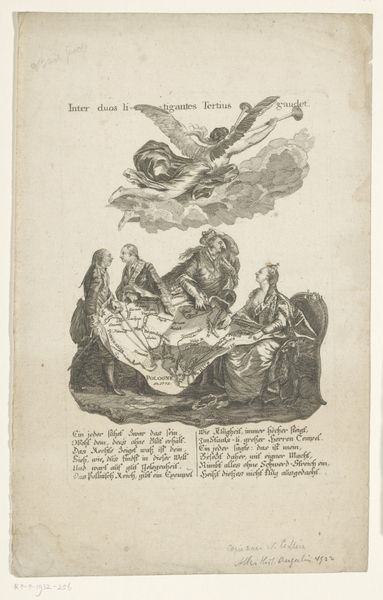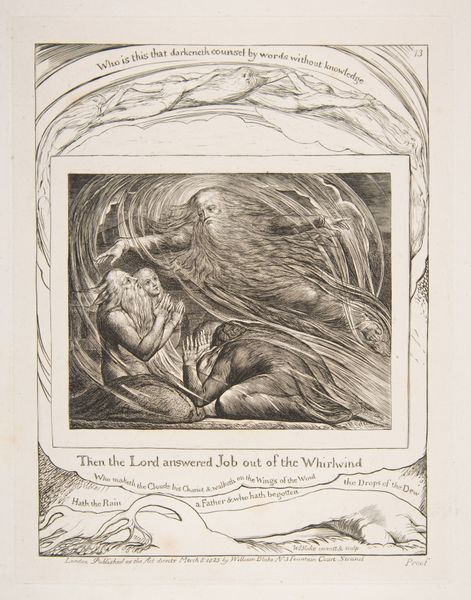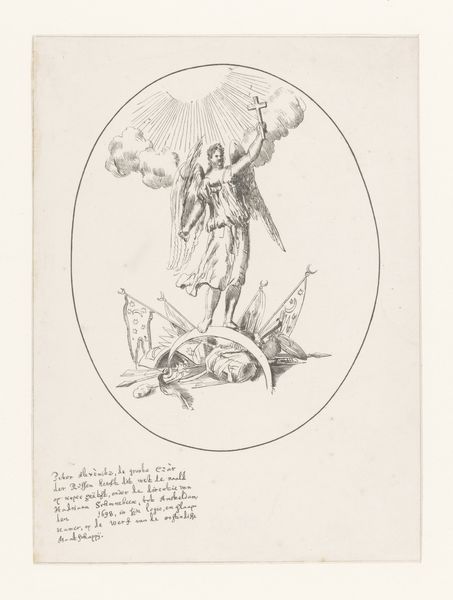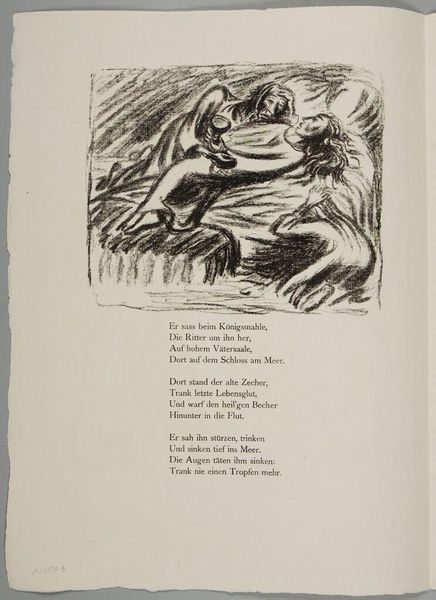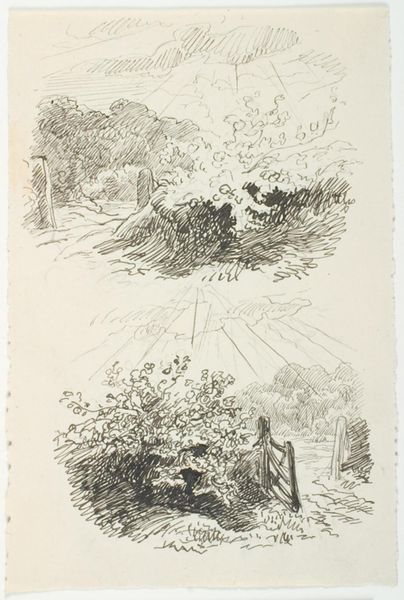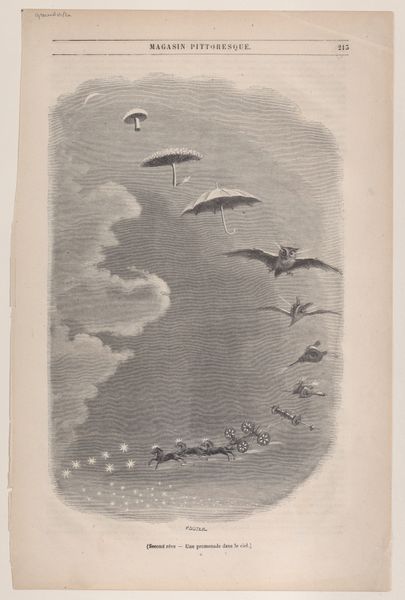
drawing
#
drawing
#
toned paper
#
ink painting
#
pen sketch
#
personal sketchbook
#
ink drawing experimentation
#
sketchbook drawing
#
watercolour bleed
#
watercolour illustration
#
sketchbook art
#
watercolor
Dimensions: 203 mm (height) x 138 mm (width) (bladmaal)
Curator: This drawing, "Udkast til "Ørnen"" by Joakim Skovgaard, created in 1885, uses ink and watercolour on toned paper. I find myself immediately drawn to the inscription at the bottom. What stands out to you? Editor: The eagle itself is really striking, but I was thinking about the tonal range here and wondered about the context behind this work. What do you see in this piece, particularly in relation to its time? Curator: Consider the cultural landscape of 19th-century Denmark. There’s this growing nationalist sentiment intertwined with religious fervor, often expressed through nature. The eagle, of course, is a symbol of power, but here it’s softened, almost devotional, framed within what appears to be a hymn or poem. What does the pairing of this symbol of might and devotion suggest to you about societal power structures and their religious justification at the time? Editor: I guess it speaks to how power, especially patriarchal power, was legitimized and even sanctified through religious and nationalistic ideas. The eagle, traditionally male in symbolism, dominating the natural landscape, with those lines of verse… Curator: Precisely. Think about who has a voice and who doesn't. The "Tunge," or tongue, in the poem. Whose voices were amplified, and whose were silenced in the artistic and political discourse of the period? How does the depiction of nature—this rugged landscape— reinforce certain ideas about national identity and belonging, excluding others? Editor: That connection to the voiceless and to power makes a lot of sense when looking at the piece. The muted color palette contributes to that serious tone. Curator: It challenges us to dissect whose stories get told and who controls the narrative in constructing national and religious identities. By looking closely, we can discern a complex power play operating even within this seemingly straightforward nature scene. Editor: Thank you. I never thought to look at it from that socio-political perspective. It's fascinating. Curator: Art history isn't just about aesthetics, but how art is fundamentally woven into the very fabric of society.
Comments
No comments
Be the first to comment and join the conversation on the ultimate creative platform.
